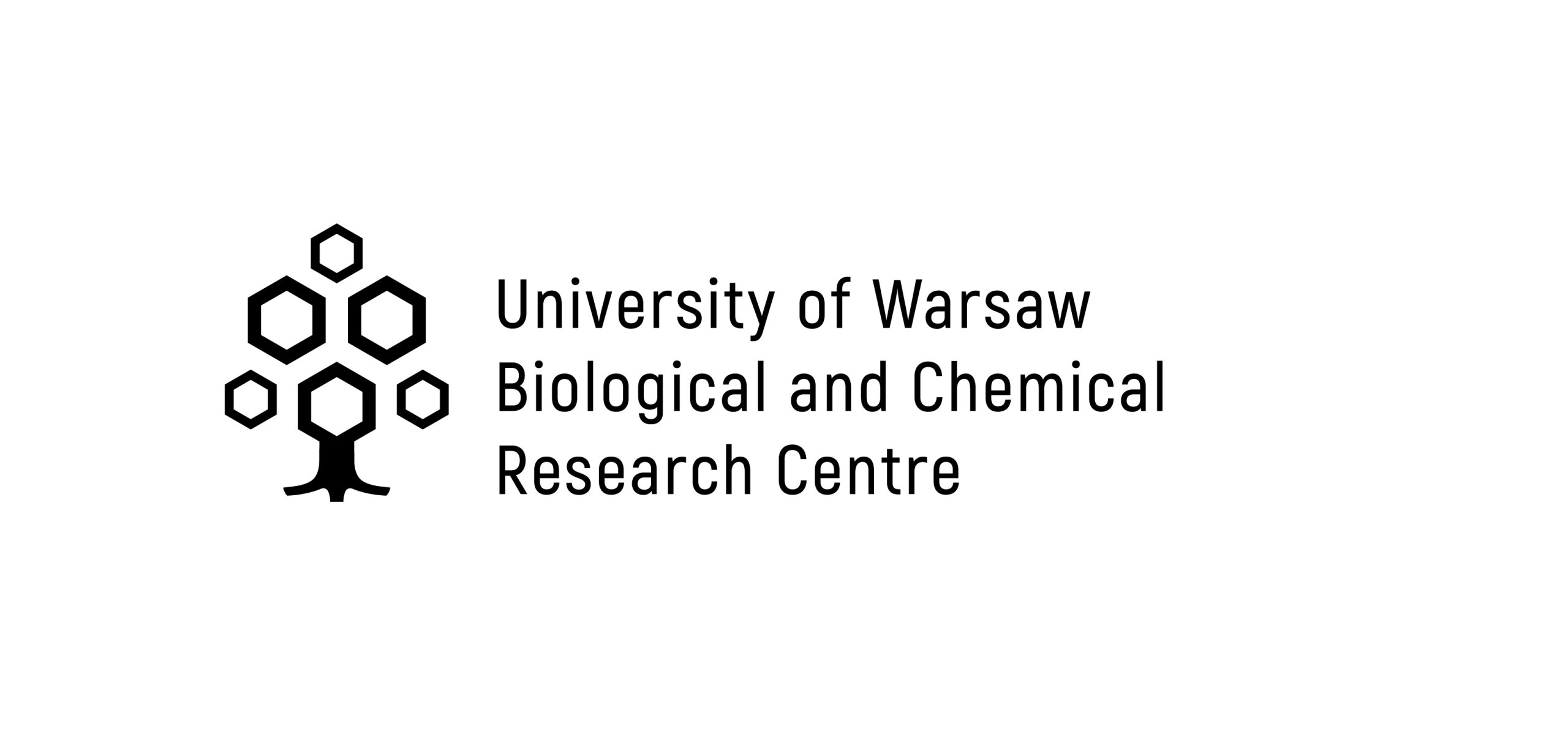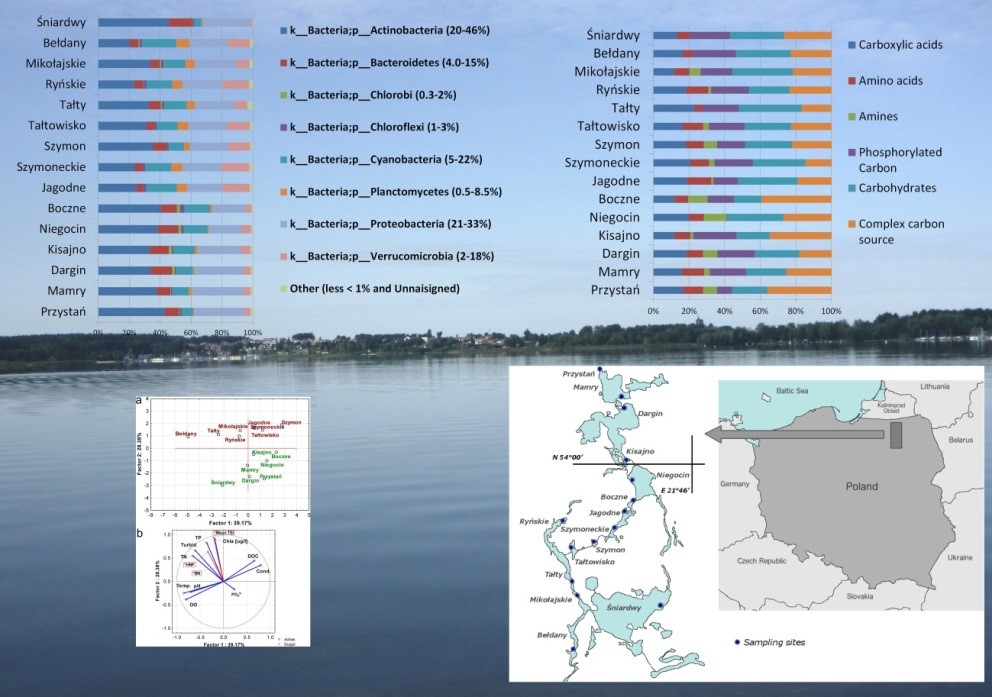Laboratory of Water Protection and Restoration
Description of the group:
The laboratory is interested in the ecology of aquatic ecosystems. It conducts research on the topic of the impact of anthropopressure on the functioning of microorganisms inhabiting the waters of temperate zone lakes in the era of global warming, paying special attention to pathogenic microorganisms and the redundancy of aquatic microbial communities.
The activities of the Laboratory of Water Protection and Restoration include:
- chemical and limnological-microbiological quality monitoring of surface waters;
- analysis of biological threats from cyanobacteria and pathogenic aquatic bacteria;
- analysis of the taxonomic structure of aquatic microorganism communities;
- evaluation of the rate of eutrophication of lakes (especially the Great Mazurian Lakes) and other water bodies;
- analysis of the impact of water and sewage management in the lake basin on lake water quality;
- analysis of the effectiveness of wastewater treatment plants and the risks associated with the discharge of treated wastewater into lake waters;
- work on bioremediation and restoration of water bodies;
- expert opinions and environmental consulting;
Based on the professional experience of its staff and its state-of-the-art measuring apparatus and research infrastructure, the laboratory offers services in the field of:
- sampling of water and bottom sediments and in situ continuous and single point measurements of water body properties (temperature, oxygen, conductivity, pH, turbidity, autofluorescence of organic matter, chlorophyll);
- chemical analyses of biogenic concentrations of C, N and P, chlorophyll a, organic carbon, BOD5, COD, oxidizability;
- microbiological analyses including:
- bacterial abundance and biomass;
- enzymatic activity of aquatic microorganisms;
- metabolic activity of microorganisms by microplate methods;
- taxonomic diversity of microorganisms from the Bacteria domain, using Oxford Nanopore sequencing;
- respiration of plankton;
- characterization of phytoplankton (with particular emphasis on cyanobacteria).
The laboratory also offers assistance in sampling planning and selection of necessary analyses to achieve the goal of the tasks undertaken.
Website: https://www.biol.uw.edu.pl/jednostki-uslugowe/laboratorium-ochrony-i-rekultywacji-wod/
Research activities:
- Monitoring of chemical, physicochemical and limnological-microbiological quality of surface waters;
- Analysis of biological hazards and lake water quality, taxonomic analysis of microorganisms including pathogenic bacteria;
- Assessment of the trophic status of lakes;
- Analysis of the impact of water and sewage management in the lake basin on lake water quality;
- Expert reports and environmental consulting.
Research equipment:
| Equipment Name | Contact Person / Room Number | |
| 1 | Nikon fluorescence microscope | |
| 2 | Sonicator | |
| 3 | MicroPlate Reader Bio Tec | |
| 4 | DOC analyzer TOC-5050A | dr Bartosz Kiersztyn/pok.: 5.128 |
| 5 | Spectrofluorophotometer Shimadzu RF-5301 PC | |
| 6 | Spectrofluorometer Shimadzu RF-1501 | |
| 7 | Fluorometer Turner TD-700 | |
| 8 | Spectrophotometer Shimadzu uv-1201v | |
| 9 | Spectrophotometer Shimadzu UV-1800 | |
| 10 | Centrifuge Eppendorf 5804 R | |
| 11 | Laboratory balance Sartorius | |
| 12 | Dryer SUP | |
| 13 | YSI 6600 probe | |
| 14 | Spectroquant Phare 300 | |
| 15 | Heater TR 620 |
About Team Leader:
Dr Bartosz Kiersztyn is a specialist in the ecophysiology of aquatic micro-organisms.
He holds a Ph.D. from the University of Warsaw. He conducts research on the effects of anthropopression and global warming on the functioning of lake microorganisms, mainly in the area of the Great Mazurian Lakes System.
He focuses on issues related to the structural and functional diversity and metabolic activity of microorganisms inhabiting lakes with varying degrees of eutrophication, with emphasis on the relationship between free-living and biofilm-forming microbial communities, as well as the relationship between autotrophic and heterotrophic microorganisms.
He has patented a method for inhibiting biofilm formation based on the activity of phototrophic microorganisms (Pat.232885).
Significant Achievement:
Thegroup studies the phenomena of the impact of humans on lake microbial communities. Lakes belonging to the GMLS show a wide range of anthropogenic eutrophication, which leads to significant changes in the taxonomic structure of lake bacterial communities.
Due to the phenomenon of redundancy, these taxonomic changes are not strongly related to changes in the activities and functions performed by bacteria in lake environments.
Nevertheless, the characteristic taxonomic structure of lake bacterial communities may influence the occurrence of pathogenic bacteria, such as those from the genera Legionella and Aeromonas.

